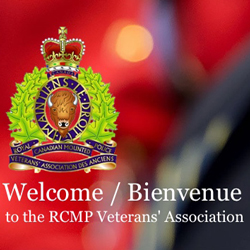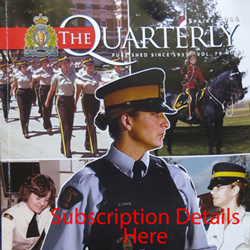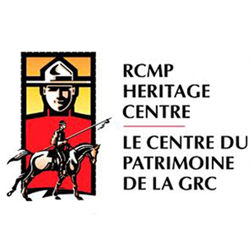Ric Hall: Commissioner’s Annual Reports – 1874-1875
Veteran Ric Hall has undertaken an effort to review the early North West Mounted Police Annual Reports to the Canadian government. In so doing, he has provided some of the notable details below for your reading pleasure.
In May 1873 the Canadian Parliament passed an act to provide for the formation of a mounted police force to bring law and order to the vast western plains which the Dominion had acquired three years earlier from the Hudson’s Bay Company.
In May 1873 the Canadian Parliament passed an act to provide for the formation of a mounted police force to bring law and order to the vast western plains which the Dominion had acquired three years earlier from the Hudson’s Bay Company.
The first step towards this important goal took place on July 8, 1874, when a Force of 275 men under the command of Commissioner G.A. French left Fort Dufferin, Manitoba on its epic march to the foothills of the Rocky Mountains. Upon his return to Manitoba in the fall of 1874, Commissioner French compiled an official account of the Force’s activities during its first year of operation. This included his own daily diary of the progress of the Force on its westward trek, as well as the report he received from many of his District Officers and Surgeons (Medical Officers) which were attached as an appendix to the Commissioner’s report. The writer’s of those reports, French, Walsh, Steele, Irvine, Herchmer, Dickens, Gagnon, Crozier, Jarvis, Deane and many more, appear as if like the “Fathers of Confederation” the men who created and shaped, good and bad, the Force in those early days. The resulting chronicles were published in the “Sessional Papers of Canada” as “The Report of the Commissioner of the North-West Mounted Police, 1874.”
In 1973, the 100th anniversary of the Force, these annual reports made a reappearance. They deal with what we would think of as mundane issues today, but were obviously of importance to the Force and the men who served, from harnesses, barracks, (lack thereof) horses, Indians, pay (some things never change), weapons, kit and clothing and the “physique” of the Force and desertions!. I copied the words as written, much we would consider as old fashioned writing, but it was the way of the day. Often when the writers refer to the Force, the ‘f” is lower case, then in the same report it appears in uppercase. The word honour is mostly spelled “honor” the “u” as we use it today in writing many words, is missing, but then it appears from time to time. Clearly there is too much to totally copy, I used some common threads to indicate the issues of the day.
The first annual report is issued, January 15, 1874 by Commissioner French to the Minister of Justice: A few of the interesting observations made in the report are:
Commissioner George French
“Although the organization of a Mounted Force for service in the North-West Territories had long been contemplated, and although by Act of Parliament 36Vic., Chap. 35, full authority was given for raising such a force, yet apparently no active steps were taken for its organization till September, 1873. As it was intended to organize the force in Manitoba, and as men were to be forwarded over the “Dawson Route,” but little time was left for the selection of Candidates. Officers just appointed were instructed to leave Collingwood within three or four days, and to bring with them fifteen, twenty, or thirty men, as the case might be, careful selection was impossible, and consequently many inferior men found their way into the ranks.
In October 1873, about one hundred and fifty men arrived in the Province, and were quartered at Stone Fort, much inconvenience and discomfort being caused by the fact of a great portion of their uniform and winter clothing being frozen in on the Dawson route.
In the same month the Government did me the honor of offering me the position of Commissioner, and having accepted it, I proceeded to Manitoba to take up my duties.”
Much has been written about the stampede of horses during a lightning storm soon after the men arrived at Dufferin, Commissioner French describes it in his report:
“On the night after our arrival one of the most dreadful thunderstorms ever witnessed in this country (and they have experience of bad ones) burst over us. There was apparently one incessant sheet of lightning from 10 p.m. to 6 a.m. About midnight 250 of our horse stampeded from the corral in which they were placed, breaking halters, picquet ropes, etc., etc., and even knocking over some of the wagons which encircled them – it was a fearful sight, several of our men had the hardihood to attempt to stop some of the horse, but it only resulted in their being knocked over and trampled on , and in this manner six of our pluckiest men got hurt, one of them being seriously injured about the head. We had the good fortune to recover most of our horses with a distance of thirty-five miles, probably in a great measure due to the freshness having been taken out of them by their 160 mile march from Fargo. Many days were lost in recovering the horses, and much injury done, riding in every direction looking for them. Our loss eventually was reduced to one, and this one was supposed to have been drowned in the Pembina River.”
“Our revolvers did not arrive from England until the first week in July, and on the 8th of July the Force drew out to a camp about two miles from Dufferin more to see that all was right than with the idea of making a start.”
“I had endeavored before leaving Toronto to get rid of any who were not willing “to rough it.” On two occasion, I assembled all ranks on parade, plainly told them that they would have, and must expect, plenty of hardship; that they might be wet day after day, and have to lie in wet clothes; that they might be a day or two without food, and that I feared they would be often without water, and I called on any present who were not prepared to take their chances of these privations to fall out, and they could have their discharges, as there were plenty of good men ready to take their places. A few did thus accept their discharges, and one feel they acted properly in the matter.”
The Great March West starts! It may have looked like the many paintings of the March West at the start, white pith helmets and gauntlets, scarlet tunics, horses and more horses, but the reality and hardship of crossing the prairies heading into the unknown would soon settle in!
“On our first starting we had of course the usual difficulties of baulky horses and unruly oxen to contend with, but, after a few days, we had little trouble in this respect. Our train was I suppose the largest ever seen in these parts; when closed up to a proper interval it was a mile and half long. But from advanced to rear guard, it was more usually from four to five miles, owing to the uneven rate of travel of horses and oxen, and the breaking of axles and wheels of that imposition of the country, the “Red River cart.” The column of route presented a very fine appearance. First came “A” Division with their splendid dark bays and thirteen wagons. Then “B” with their dark browns. Next “C” with bright chestnuts, drawing the guns, and small arms ammunition. Next “D” with their greys, then “E” with their black horses, the rear being brought up by “F” with their light bays. Then a motley string of ox carts, ox wagons, cattle for slaughter, cows, calves, & mowing machines, etc. etc. to a stranger it would have appeared an astonishing cavalcade; armed men and guns looked as if fighting was to be done; what could ploughs, harrows, mowing machines, cows, calves, etc. be for? But that little force had a double duty to perform; to fight, if necessary, but in any case to establish posts in the far west.”
The word “fort” as used in these regions requires some explanation. In its ordinary significance it is no wonder that people should feel alarmed at hearing that there were eight or ten forts between the Belly River and Edmonton, but when one understands that any log hut where a trader makes his headquarters is a fort the cause for alarm disappears. These forts are usually named after the trader who builds them.
“A considerable number of men had served either in Her Majesty’s Regular Service, in the Royal Irish Constabulary, or in the schools of gunnery at Kingston and Quebec; and there were very few indeed who had not some military experience, in the Regular Service or Militia. From these circumstances, as well as from the fact of the intelligence and respectability of the great bulk of the men enrolled, the progress in drill was extraordinary, and the scores made at target practice would indeed have been astonishing to anyone unacquainted with the natural aptitude of Canadians in this particular.”
“In the matter of riding, the progress was much less satisfactory. According to the Act, all men should have been able to ride; but when put to the test, it was very evident that a good many rated their abilities in this line too highly. It was too much to expect that much advance could be made in riding in such a limited time and with untrained horses; however, I consoled myself with the reflection that, whereas drill and no target practice could be carried out on our line of march to the West, there would be ample opportunity for the practice of equitation.”
“I am now satisfied and I never doubted it, that the defamatory letters which have from time to time appeared in the press, were written by ill-disposed persons and did not give a true statement of this Force, probably by deserters, who having broken their Oath of Allegiance did not scruple to write untruths when they found the police force was not the holiday past time they had anticipated.” Major-General Selby-Smyth addressing the Force following an inspection at Fort Carlton.”
The last paragraph of his report reads as follows:
“I feel, Sir, that in the foregoing Report I have but very inadequately represented the doings of this Force; the broad fact, however is apparent –a Canadian force, hastily raised, armed, and equipped, and not under martial law, in a few months marched 2,000 miles, through a country for the most part as unknown as it proved bare of pasture and scanty in the supply of water. Of such a march, under adverse circumstances, all true Canadians may well feel proud. To the Government of the Dominion my heartfelt thanks are tendered, for having placed me in a position which entitles me to claim that I was a member of a corps which performed one of the most extraordinary marches on record. I have the honor to be, Sir, your most obedient Servant, G.A. French, Commissioner, NWMP”
Commissioner French does not issue an Annual Report for 1875, he was probably too busy settling the west!
By Order in Council of the 20th April, 1876, the control and management of the North West Mounted Police was transferred from the Department of Justice to the Department of the Secretary of State and Fred White the Comptroller submits a report for 1876 to the Hon. R. W. Scott, Secretary of State, the report is fairly succinct and details accounts of Force members meeting with Indians.
In Ric’s next webpage will touch the details of the 1877 – 1878 Report of the North West Mounted Police.


 January 28, 2015
January 28, 2015 














